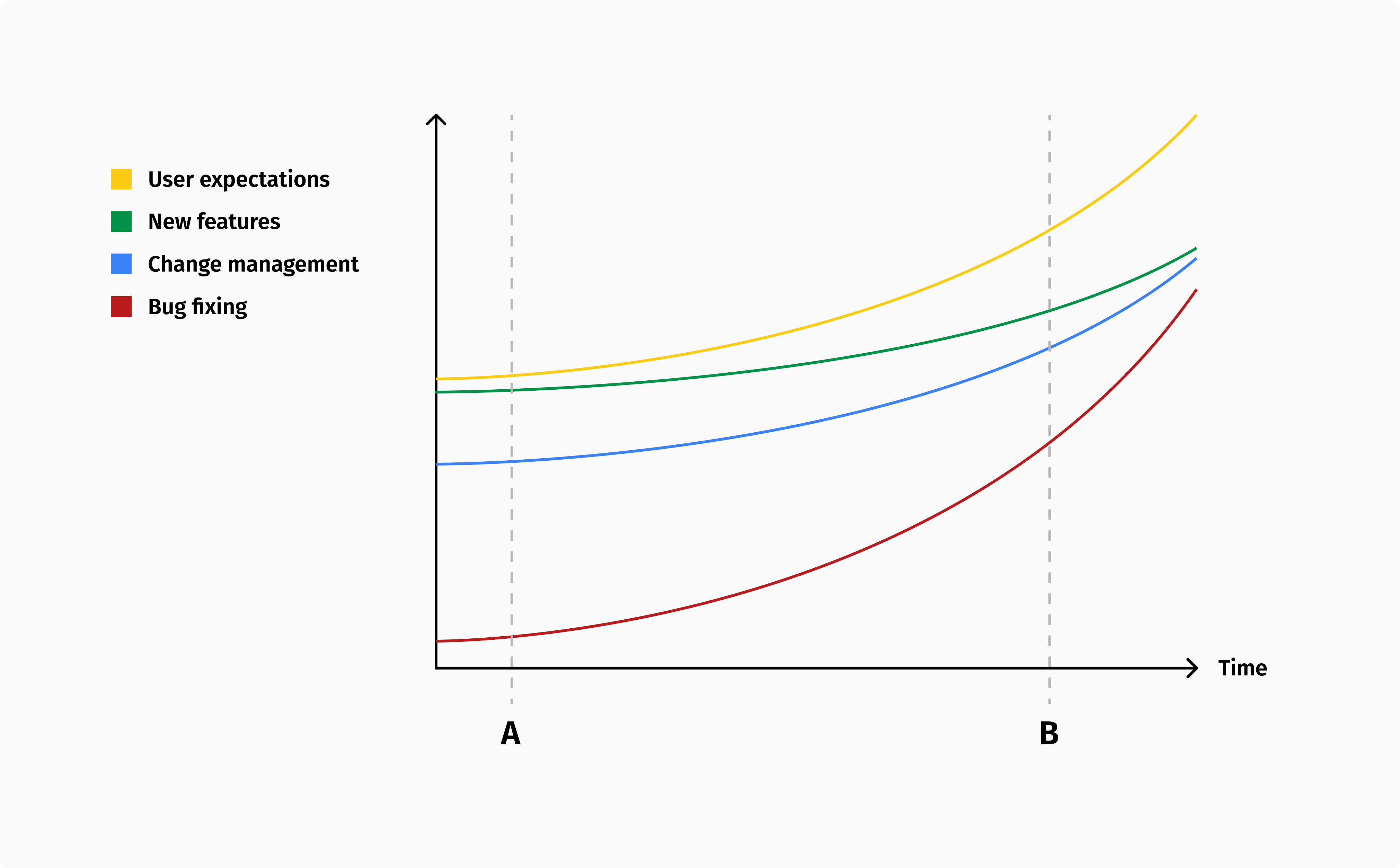Take a look at the graph below. It represents the typical software development lifecycle for monolithic applications. Time is plotted on the X axis. Customer expectations, new feature development, change management, and bug fixing are represented on the Y axis.

As you can see, the four curves show different trends. The expectations of customers—in yellow—always grow over time. The development budget, represented by the green, blue, and red curves, also increases. As you need more budget to support an ever-evolving customer experience, there's nothing wrong with it at first glance. However, if you double click on the distribution of that budget allocation, you will notice that the budget for change management and bug fixing grows much faster than the budget for new features. As a result, there is an ever-growing gap between customer expectations and new features.
For example, let's see what happens at time A and time B. At time A, your system has a few bugs that can be observed and fixed right away. It's also quite easy to manage changes, so you can allocate your budget to new features and stay very close to your customers' needs. As we move forward to time B, you have accumulated technical debt that needs to be resolved as quickly as possible. Things become more difficult to change, and as a result, there is a larger gap between customer expectations and new features.

This gap between customer expectations and your ability to deliver new features has a cost, which can be defined as the cost of doing nothing. Nothing that changes your approach to software development. Nothing that breaks the rules from the past. Nothing that contradicts the popular belief that "nobody gets fired for buying IBM". It's 2024, and we're still hearing that.
Often, composable architectures are considered riskier than monolithic platforms. People still believe monoliths are safer because everything is done and ready. It is quite the contrary in reality. In an ever evolving digital landscape, where AI and other dozens of innovations are on the agenda, doing things as you have always done in the past is likely to be the most risky and dangerous choice you can make. Never forget that your competitors are just a click away. So if you do nothing, or move too slowly, it could mean the end of your business.